12 Best Customer Engagement Platforms: Options by Category
The right customer engagement platform can help you deliver personalized content and support across all channels and customer lifecycle stages. However, customer engagement is a broad and amorphous category that’s evolved over the years.
Updated on 29 Sep 2025
Traditional engagement solutions focused on a few channels (e.g., email and live chat) and use cases like providing customer support. Today, many tools fall under the umbrella of customer engagement — from robust omnichannel platforms to niche solutions for specific teams and channels.
This makes finding the right platform for your needs difficult and time-consuming. That’s why in this guide, we’ll look at the 12 best customer engagement platforms organized into three categories based on their main capabilities and use cases:
- Omnichannel customer engagement platforms: These are the most versatile platforms on this list. You can think of them as centralized hubs that facilitate customer interactions across a plethora of channels for different teams, including marketing, sales, and customer support.
- Customer engagement platforms for customer service: These more traditional platforms are mainly used by customer service teams to ensure fast response and resolution times for queries. They’re also called ticketing systems or helpdesk software.
- Customer engagement platforms for social media interactions: These are niche engagement solutions for interacting with customers across social media comments and conversations. They’re generally used as complementary tools in a larger customer engagement stack.
Before we dive into the tools, we’ll explore what customer engagement platforms actually are, how they work, and the benefits of using them.
Insider can help you engage customers on 12+ channels with personalized content, messaging, and product recommendations. Visit our website to learn more about our omnichannel experience and customer engagement platform.
What are customer engagement platforms?
A customer engagement platform is a software solution built to facilitate interactions between businesses and their customers. These platforms ensure each interaction is relevant, timely, and useful to customers, which helps brands create personalized customer experiences that generate more revenue and lead to higher retention.
Most customer engagement platforms can facilitate interactions across multiple channels, like email, live chat, SMS, WhatsApp, Facebook Messenger, and so on. They also enable the creation of automated flows across these channels to reduce response times and ensure customer satisfaction.
Here’s a quick example of how a customer engagement platform works:
Say you have a first-time customer who just bought an item from your eCommerce store and downloaded your mobile app. Over the next weeks, you can use a customer engagement platform to:
- Send out an email survey to ask about the purchase experience.
- Recommend products that are frequently purchased with the one the customer bought.
- Experiment with other marketing channels in case the customer doesn’t engage with your messages.
- Answer questions and resolve issues they might have with the product, delivery times, and so on, either with live agents or AI-powered automations.
- Use reliable data — usually stored in a customer relationship management (CRM) system or customer data platform (CDP) — to refine your approach based on customers’ feedback and interactions.
The key here is that a good customer engagement platform helps you do all of these things from one place. Instead of jumping around apps, your marketing, sales, and customer service teams can facilitate these interactions from the customer engagement platform.
Besides simplifying workflows and avoiding context switching, this ensures all teams are working based on the same understanding of customers’ journeys, needs, and interests. This leads to consistent communication across all functions and lifecycle stages.
I. Omnichannel customer engagement platforms
These platforms can be used by marketing, customer support, and sales teams to reach customers across channels with relevant content, messaging, and product recommendations.
All six of the platforms below offer:
- Broad channel support across email, push notifications, SMS, WhatsApp, and other touchpoints.
- Features for automating individual messages or campaigns across their supported channels. This can include sending personalized product recommendations via email, delivering fast and relevant live chat responses, and much more.
- Tools for consolidating customer data and using it as a foundation for cross-functional team needs. For some of these solutions, that’s done through a CDP and for others — via a CRM.
- Features for analyzing engagement and collecting customer feedback via surveys, pools, reviews, and so on. These capabilities show teams how customers feel about various interactions and help them uncover ways to improve the user experience.
This makes them ideal if you want to manage your engagement efforts from one place by streamlining and optimizing all conversations across the customer lifecycle.
1. Insider
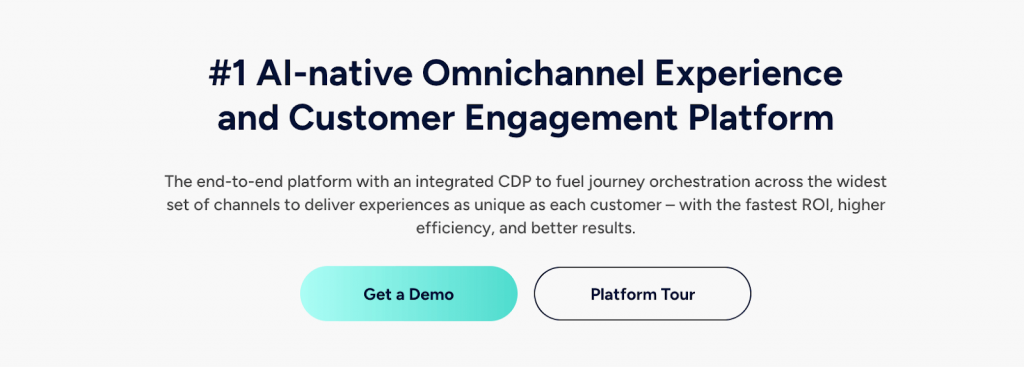
Insider is an AI-native omnichannel experience and customer engagement platform that lets you personalize user interactions, drive engagement across the entire customer lifecycle, and generate more revenue.
Over 1200 midsized and enterprise brands rely on Insider to:
- Generate more leads and guide them through the sales funnel. Toyota used our Exit Intent Overlays to engage users as they were leaving their website. They also send out personalized surveys to understand the needs and preferences of visitors. These engagement tactics led to a 166% increase in test drive applications and an up to 18% traffic boost to key landing pages.
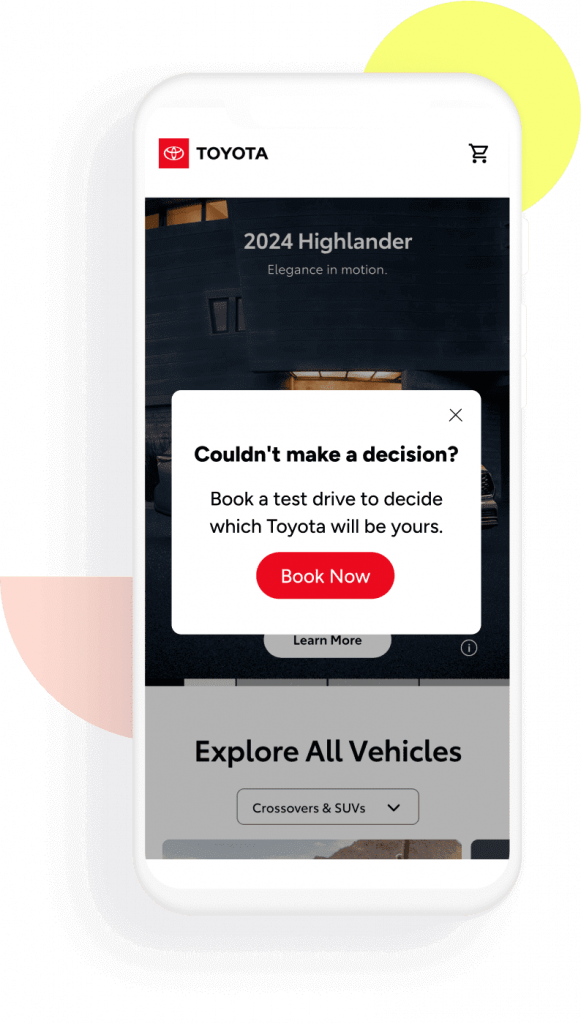
- Increase conversion rates and revenue. Leroy Merlin used Insider to pinpoint areas where customers were likely to leave the site and engage them with relevant messaging. They also built automated price drop alerts for customers who had already visited specific products. The result of these tactics was an 8.8% increase in the company’s eCommerce revenue.
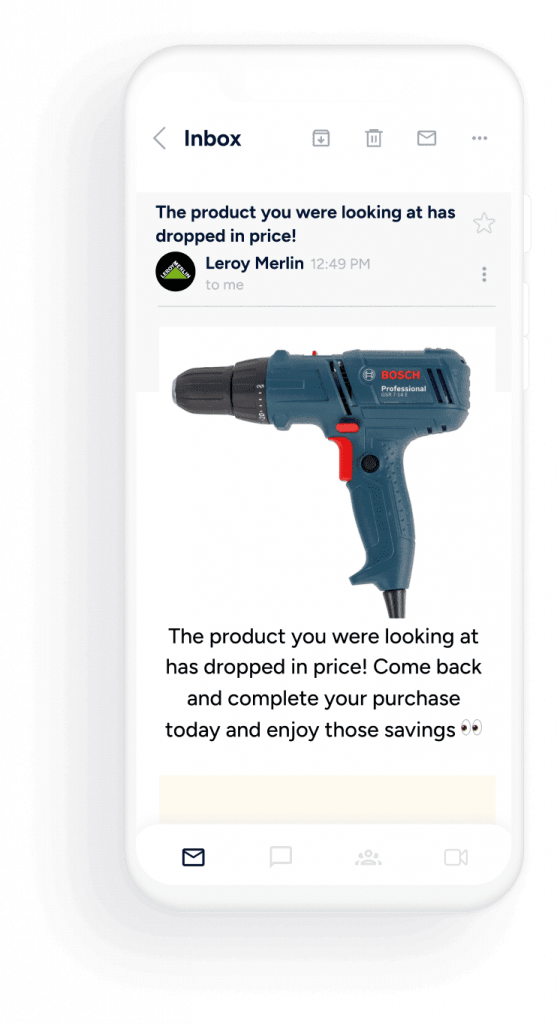
- Boost their marketing return on investment (ROI). Slazenger used Insider to overcome various challenges using personalized customer engagement, including getting back cart abandoners. Their campaigns spanned across on-site, email, SMS, and web push, helping the brand achieve a 700% increase in customer acquisition and drive a 49x ROI in just eight weeks.
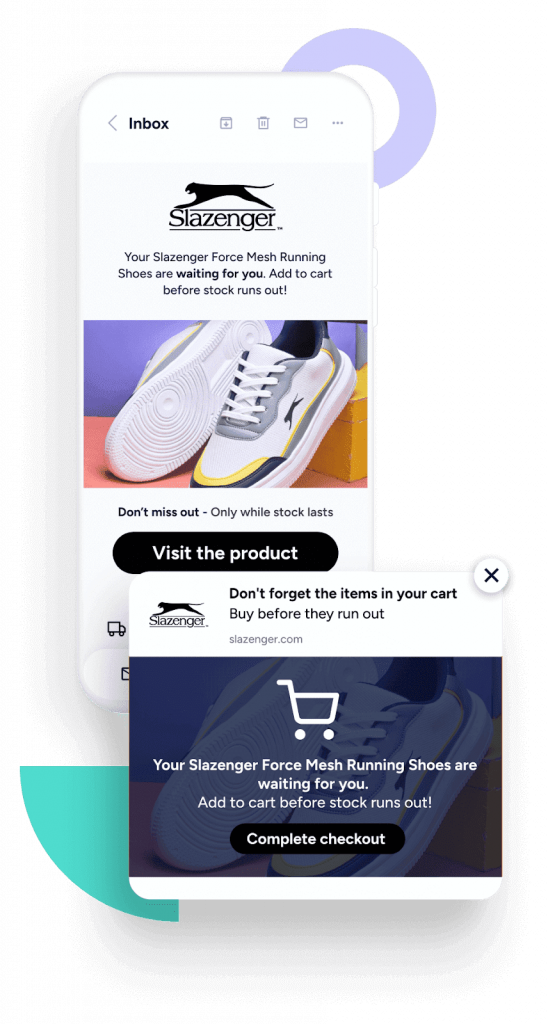
- Deliver fast customer service across messaging channels. Renault consolidated its customer data with our CDP in order to facilitate consistent experiences across channels. Then, they used our AI-powered virtual assistant to engage customers and provide quick support via WhatsApp. This led to a 93% decrease in customer service wait times.
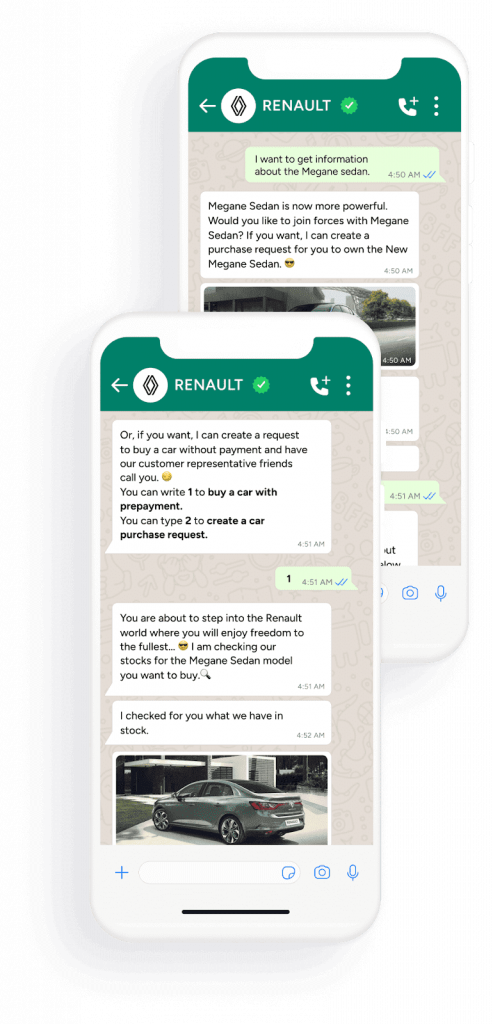
- Consolidate their customer data and channels to deliver exceptional experiences. NA-KD used Insider to unify customer data and create personalized campaigns across email, SMS, app push, web push, and their mobile app. This enabled the brand to increase customer lifetime value by 25% and achieve a 72x ROI in 12 months.
Our platform is constantly ranked as the top solution in categories like ease of setup, ease of use, and support quality, compared to other popular omnichannel marketing and engagement solutions.

Below, we’ll explore some of the key benefits that Insider brings as an omnichannel customer engagement solution.
Engage customers on 12+ channels
As a true omnichannel customer engagement platform, Insider enables you to reach customers on a plethora of touchpoints from one place. These include your website and mobile app, as well as other communication channels like email, SMS, WhatsApp, push notifications, chatbots, and more.
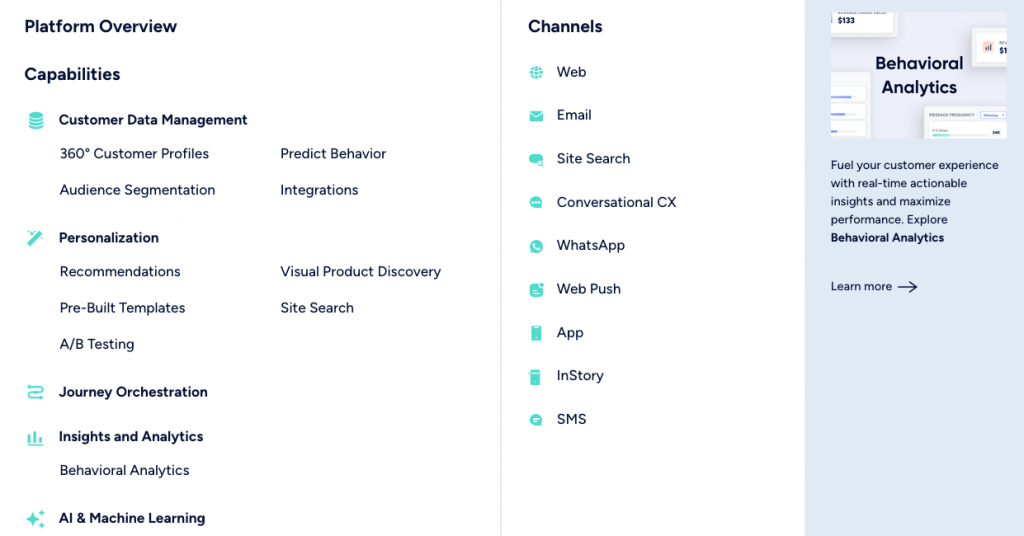
If you’re interested in having conversations with customers — whether for marketing, sales, or customer service purposes — our platform also supports channels like Facebook Messenger, iMessage, Instagram, and Microsoft Teams.
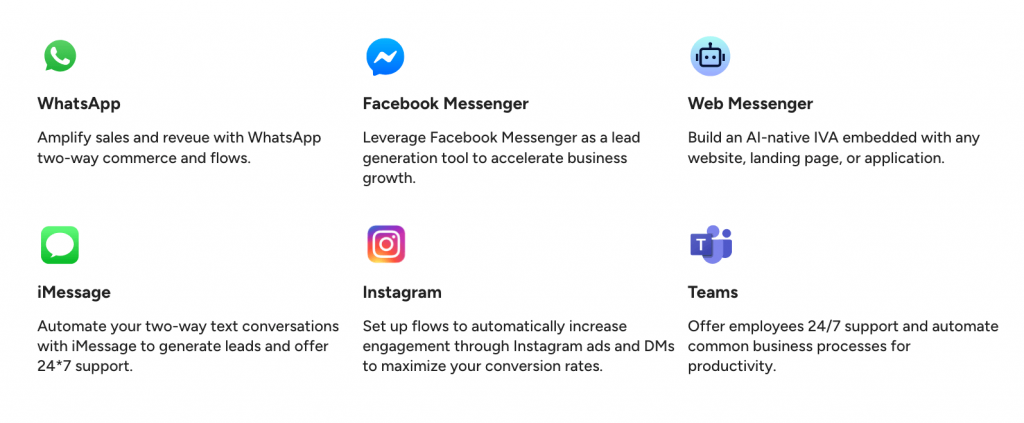
Put simply, you can use Insider to consolidate all your customer engagement efforts in one place. This removes context switching and makes it easier to manage omnichannel engagement efforts.
It also reduces the total cost of ownership (TCO) and complexity of your martech stack. Instead of managing multiple solutions with varying pricing plans and renewal periods, you’re only dealing with one service provider, leaving you more time to focus on delivering exceptional customer experiences.
Use real-time, unified data and segments to power every customer interaction
Successful customer engagement requires understanding your users — what they’re interested in, the products and channels they prefer, and so on. This is only possible with a foundation of reliable, consolidated data that all teams can count on when engaging customers.
That’s why Insider offers a true CDP for unifying customer data and creating 360-degree customer profiles. Thanks to our platform’s connectors and flexible API, you can get customer data into the CDP from 100+ popular solutions, including:
- Ad networks like Google, Facebook, and TikTok.
- CRMs like Salesforce, Pipedrive, HubSpot, and Oracle Netsuite.
- Analytics and attribution platforms like Mixpanel, Amplitude, and AppsFlyer.
- Marketing automation platforms like Pardot, Keap, and Marketo.
- Customer loyalty solutions software like Voucherify and Yotpo.
- And many other SaaS solutions.
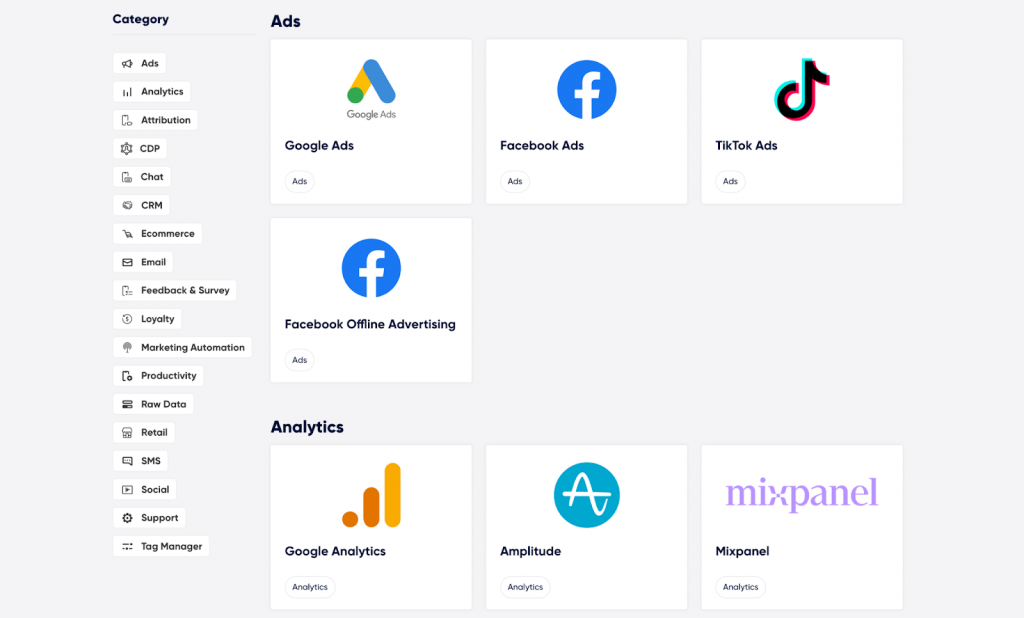
Our platform then automatically creates detailed, 360-degree customer views containing key information including:
- Customers’ names, demographics, and channel reachability.
- Predictive characteristics, like the likelihood to purchase or engage on a specific channel.
- Behavioral data, like customers’ interactions with your website or messaging channels, purchase histories, and more.
- Prior conversations with support and sales teams.
- Survey responses.
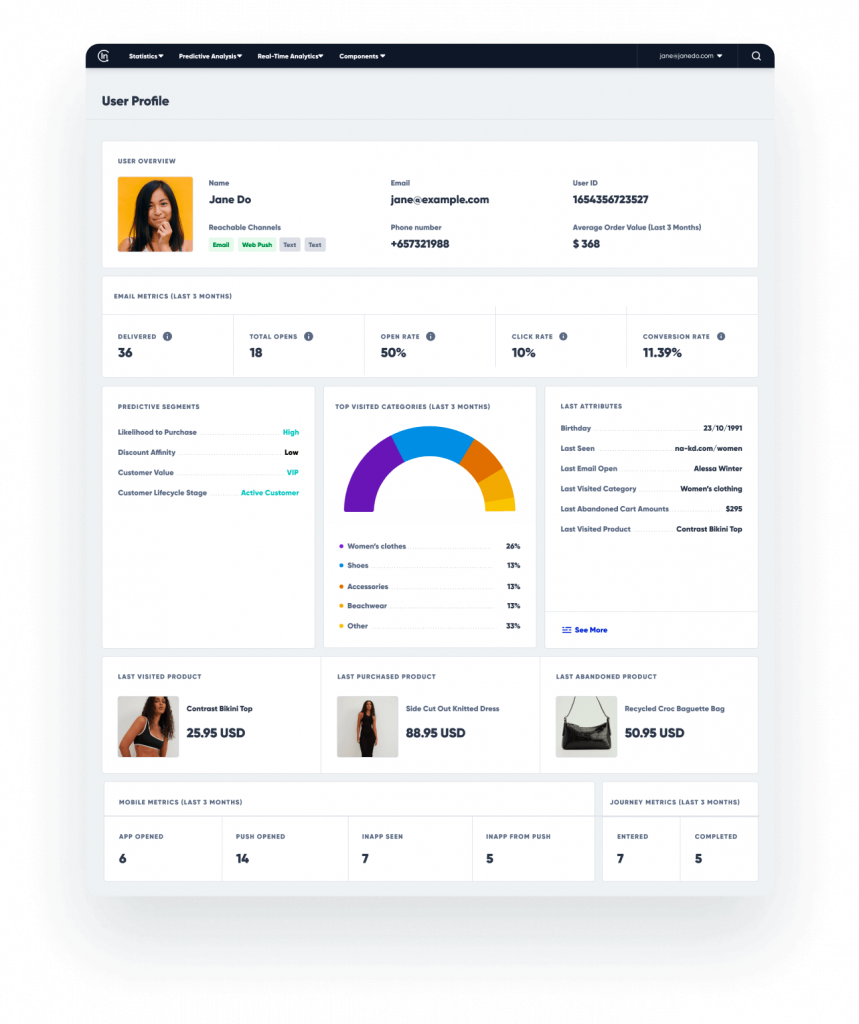
Besides using this data as a foundation for personalized marketing, sales, and customer service, you can quickly start to build valuable customer segments. Our platform offers 120+ traits, behaviors, and attributes for segmentation across three audience types:
- Standard audiences (e.g., demographics, devices, platforms).
- Pre-defined audiences (e.g., cart abandoners, channel interactions).
- AI-powered predictive audiences (e.g., likelihood to purchase or engage on a channel).
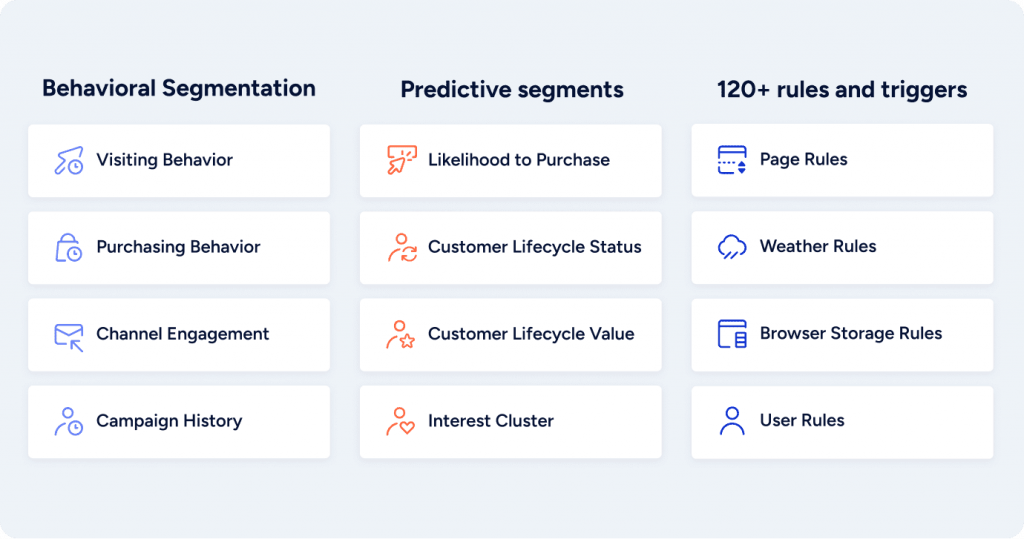
As we’ll discuss later, you can easily target these customer segments using personalized ads, product recommendations, messaging channel campaigns, and much more.
Have AI-powered, two-way conversations at scale
Today, users expect relevant messages, fast responses, and personalized experiences. They also know brands must reach them on their preferred channels and not the other way around.
However, scaling this type of personalized engagement approach is a huge challenge for most companies. Fortunately, Conversational AI can do much of the heavy lifting by responding to customers with relevant suggestions and useful information.
For example, Insider’s Conversational CX offering lets you build two-way conversational experiences for all stages of the customer journey and across different channels. As a result:
- Marketers can interact with leads and nudge them closer to a purchase as well as engage current customers to make additional purchases, based on their needs and interests.
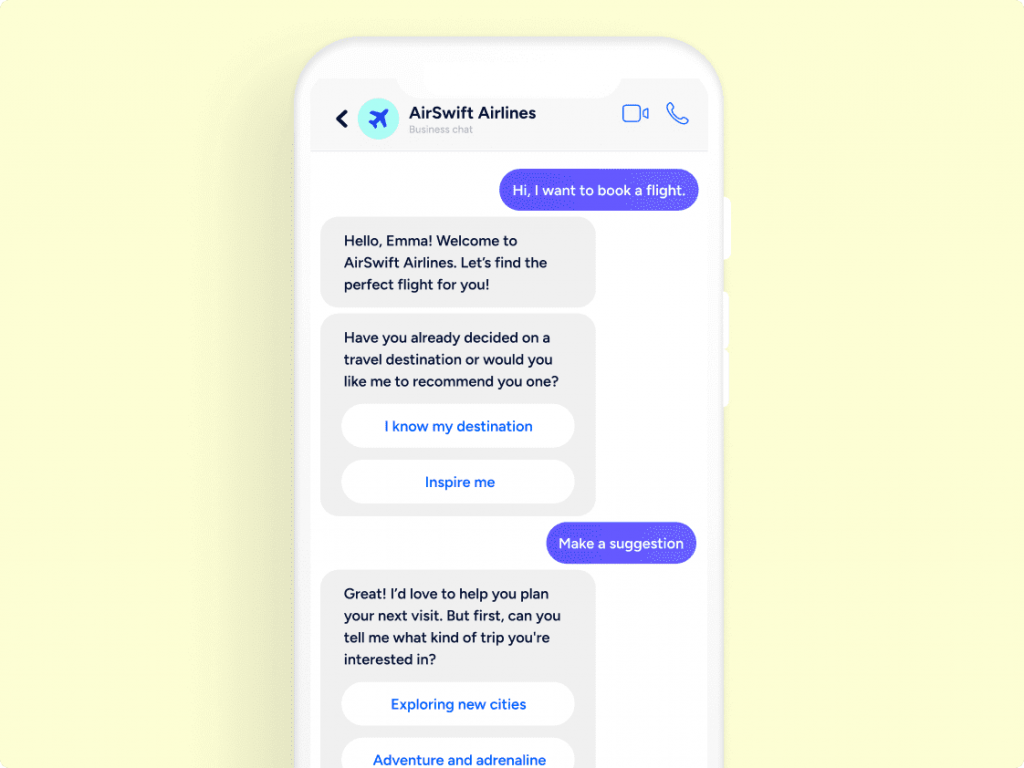
- Customer service agents can benefit from AI’s ability to predict queries, resolve repetitive issues, and automate other responses. This means they can be more effective by focusing their efforts on more complex, high-impact tickets.
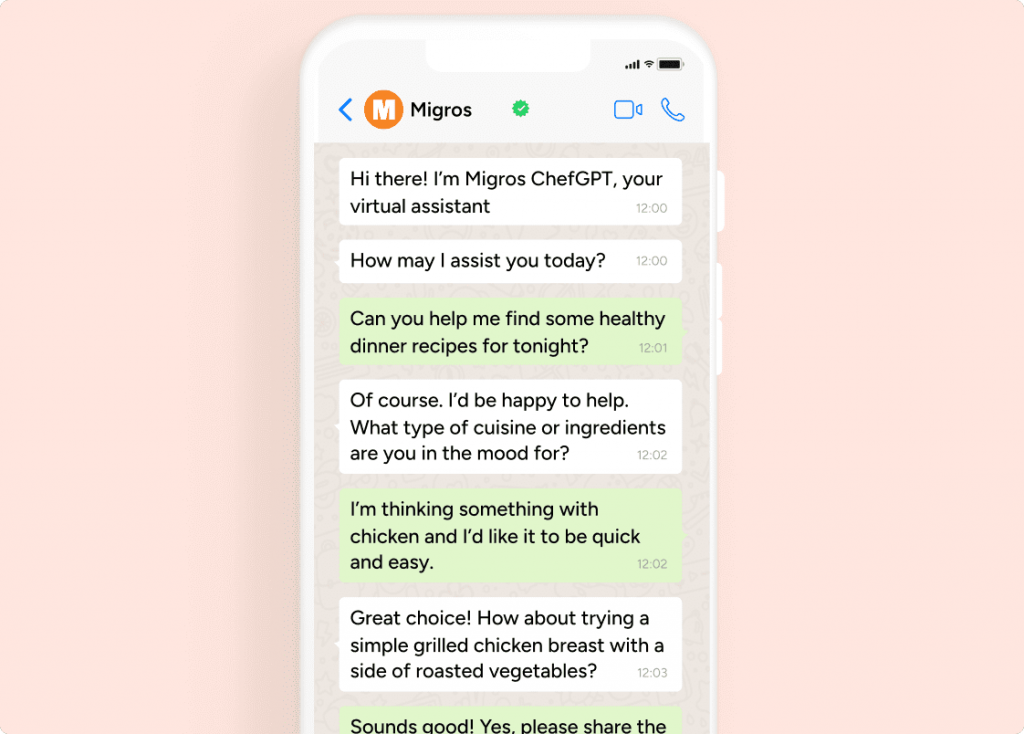
You can create custom bot personas that fit your brand’s tone and guidelines while following strict knowledge limits and safety rules.
Our platform also makes it easy to hand over conversations to human agents whenever necessary to resolve customers’ issues. The agent dashboard shown below integrates with contextual customer data and bot conversation analysis to ensure queries are always handled in the best way possible.
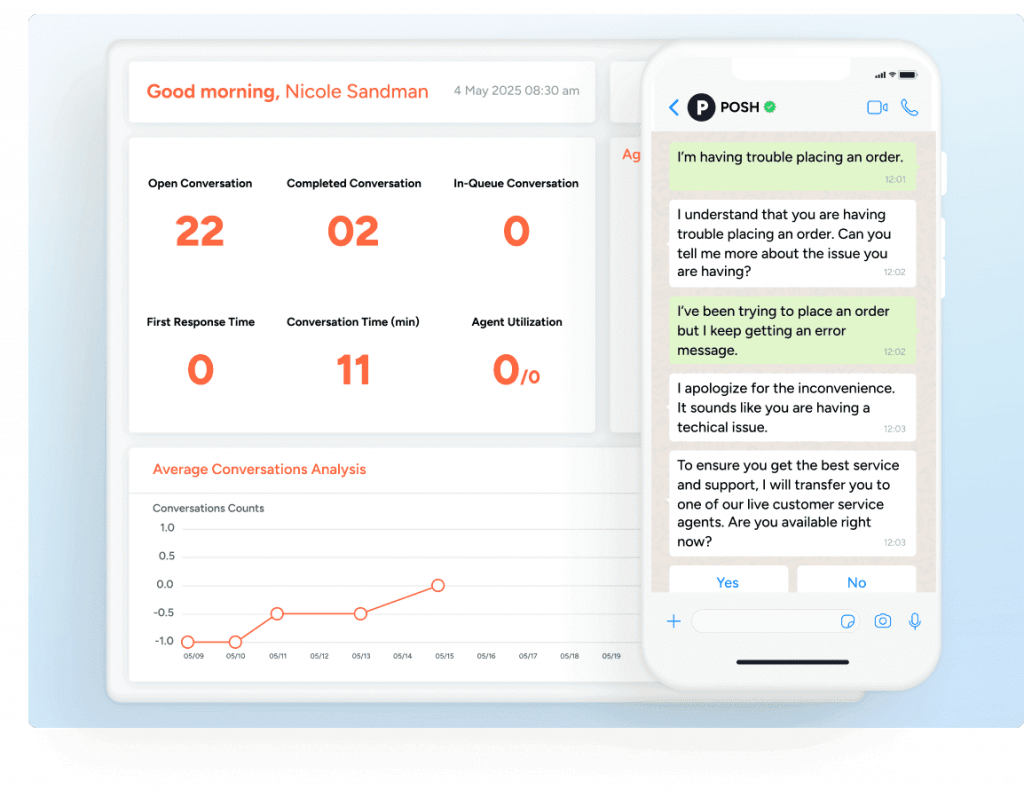
Again, all of this is based on a foundation of unified customer data and integrations that ensure a constant flow between your channels and platforms.
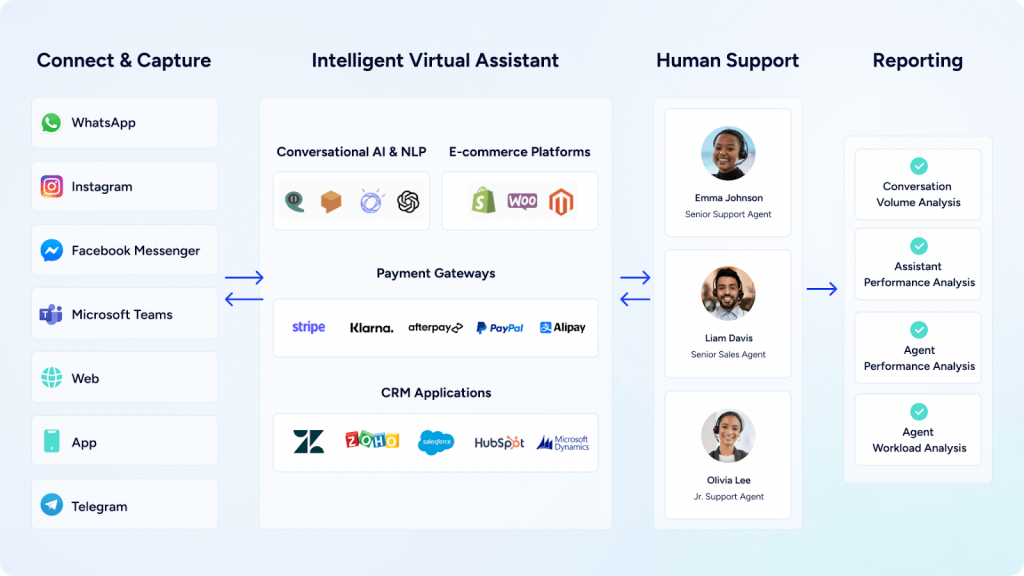
Lastly, if you’re using WhatsApp, Insider can help you unlock the power of WhatsApp Commerce — the ability to let customers browse products, add them to their carts, and complete their purchases without leaving the app.
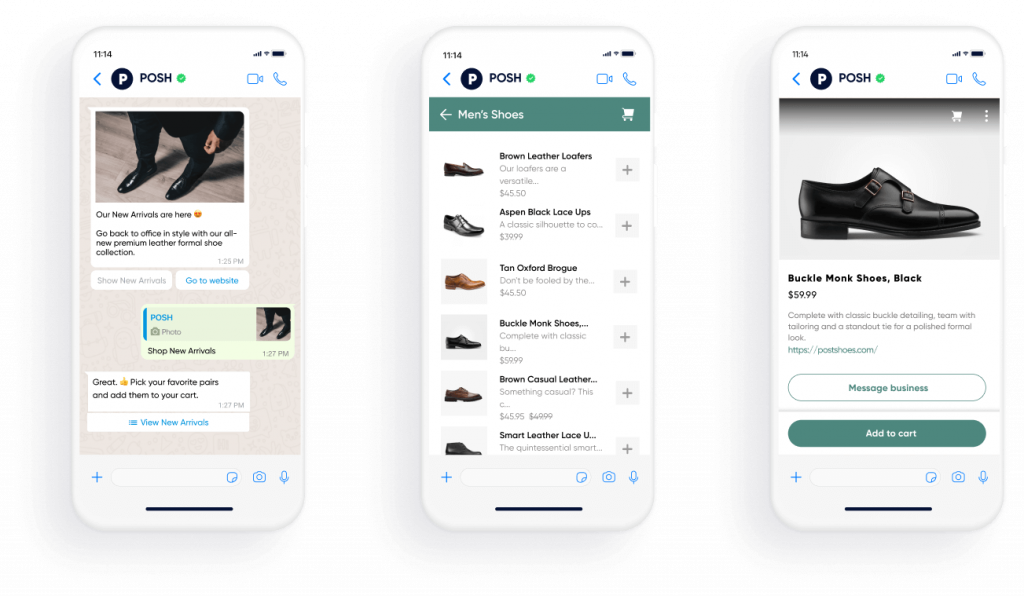
This is a great way to streamline the buying process and provide relevant information — e.g., about sizes, delivery times, or new arrivals — every step of the way. Here’s what an eCommerce Director for a leading food retailer had to say about this capability:
“Insider’s WhatsApp Commerce has fundamentally changed how we interact with our customers. We’re now able to meet our audience where they already are and offer complete order booking experiences at the touch of a button within their favorite app.
Insider’s WhatsApp Commerce lets us build more personalized and conversational purchase experiences for our audience, as an extension of our promotional campaigns — allowing them to leverage our offers, browse our menu, and place an order without leaving WhatsApp. This has significantly reduced cart abandonment by 61% and improved our monthly average order value by 38%.”
Personalize content, product recommendations, and messages for higher engagement, conversions, and revenue
Beyond reaching customers across a variety of touchpoints, Insider ensures all your engagement efforts are personalized. For example, here are channels and elements that you can personalize with our platform:
- Website and mobile app: You tailor everything from banners and categories to product recommendations, site search results, and more to website visitors and customers’ preferences. This is essential for maximizing conversion rates and marketing spend. Avon used our AI-driven product recommendations to achieve a 23% increase in conversions.
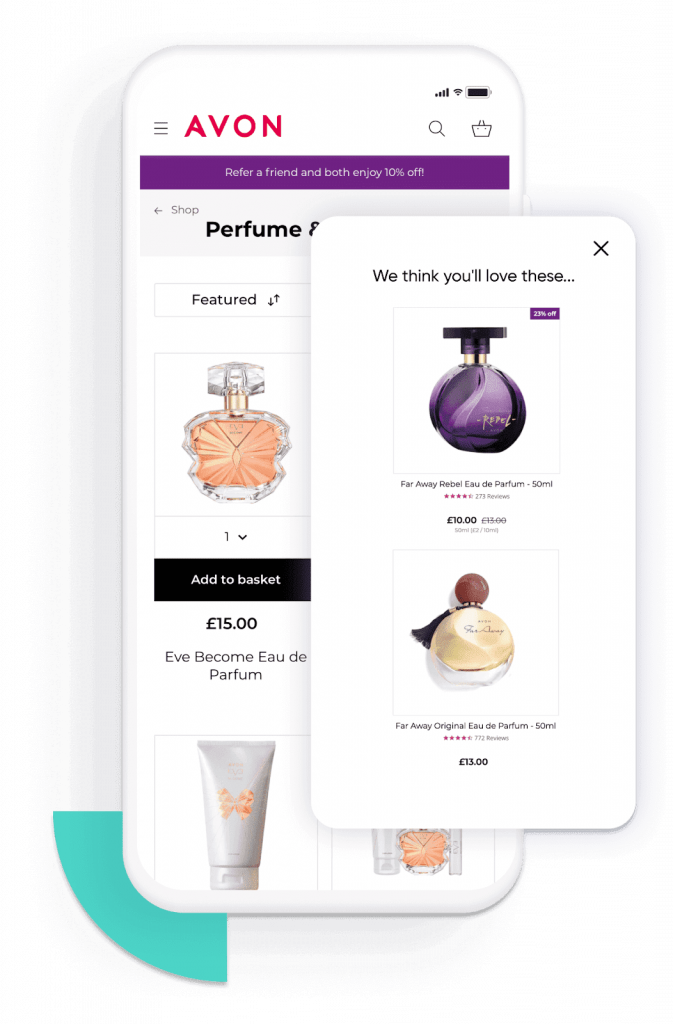
- Emails: Insider lets you add all sorts of personalized elements to your emails — from customers’ names, milestones, and cart items to relevant product recommendations. You can also leverage AMP emails to increase engagement and conversion rates by letting customers answer surveys, browse products, and complete bookings without leaving your emails.
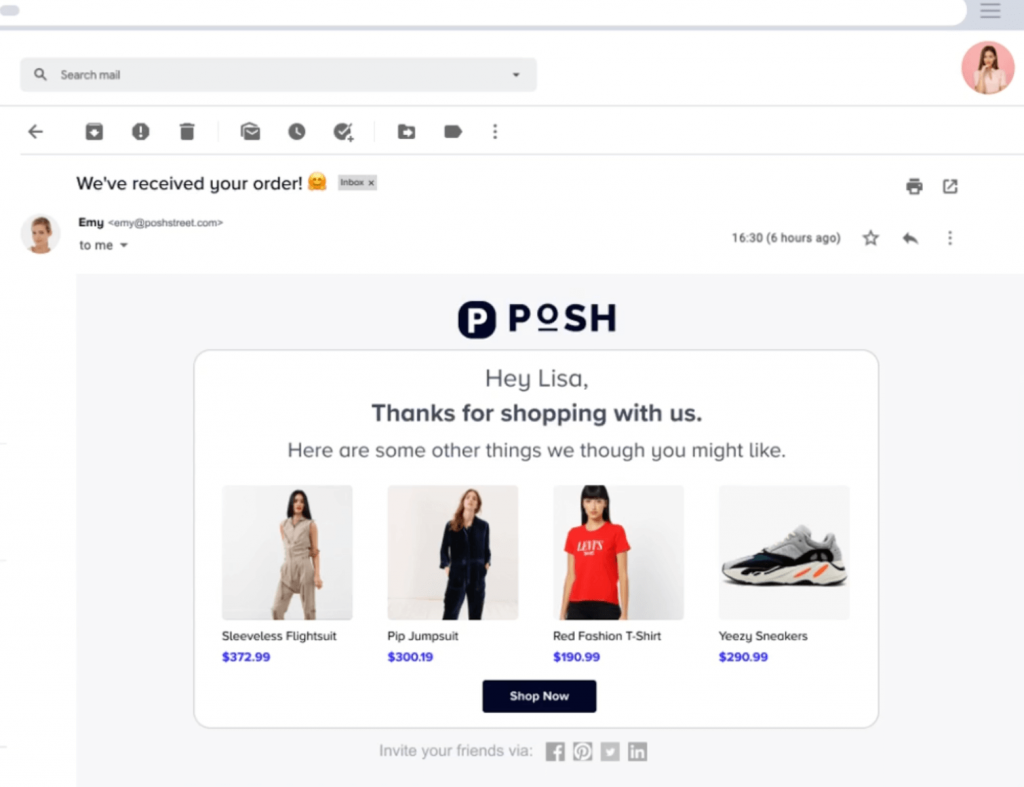
- Messaging channels: As we said, Insider lets you reach customers across a plethora of messaging channels like WhatsApp, SMS, Facebook Messenger, and more. Our platform lets you build all sorts of personalized messages and campaigns for these touchpoints — including price drop alerts, event reminders, cart reminders, and much more.
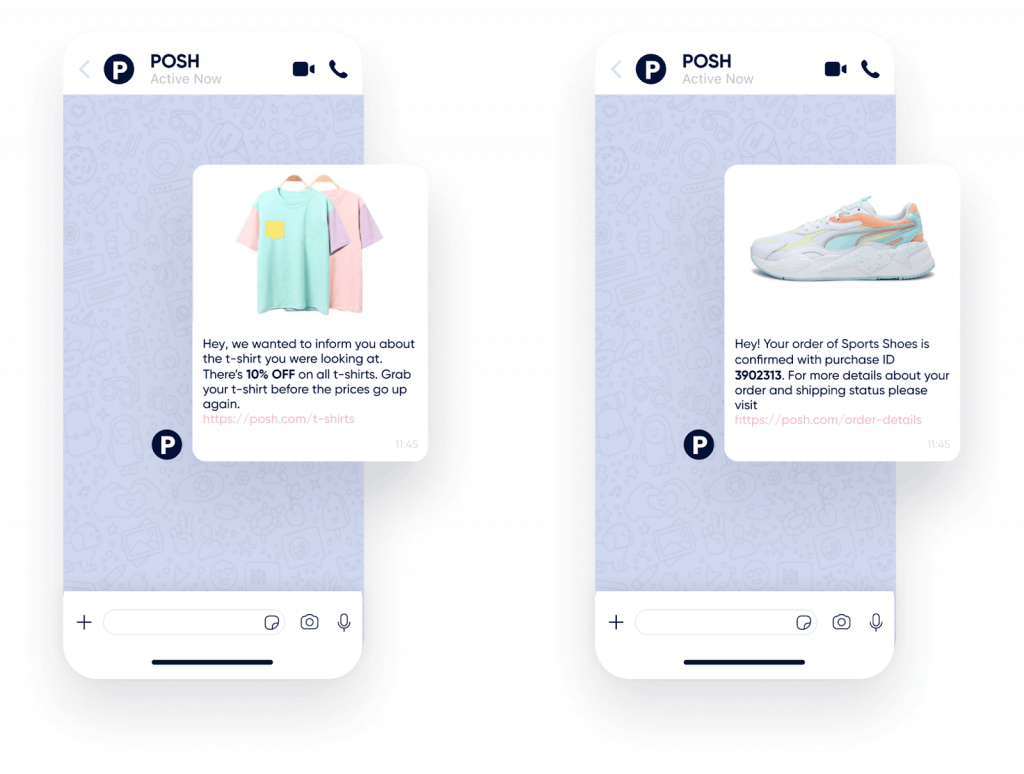
- Social media and search ads: Thanks to our integrations with Google, Facebook, and TikTok, you can easily target customer segments built with Insider with relevant online ads. For example, you can target users who show interest in a product and have a high likelihood of purchasing to ensure higher conversion rates and lower acquisition costs.
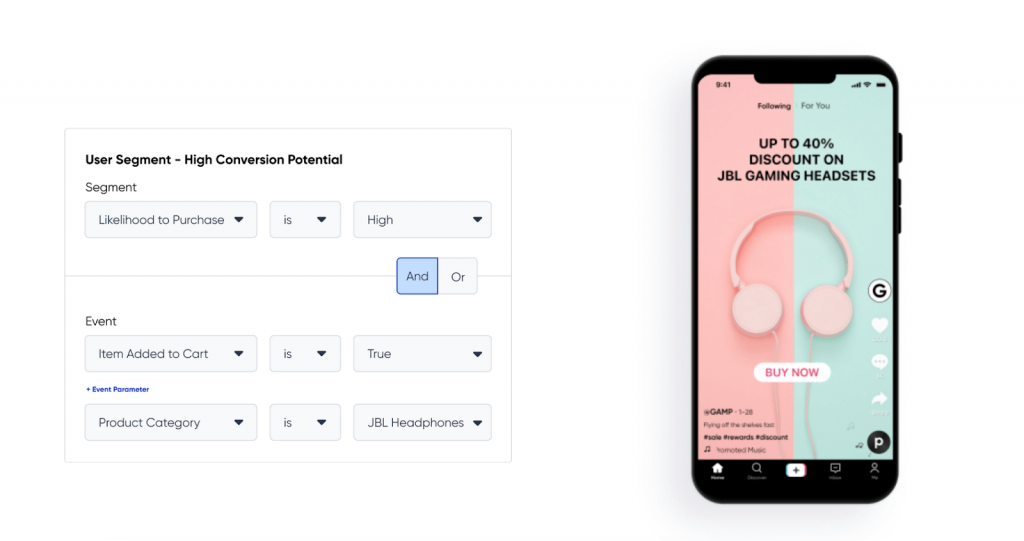
- Lastly, you can easily build and automate campaigns across these channels with Architect — our omnichannel customer journey builder and marketing automation solution.
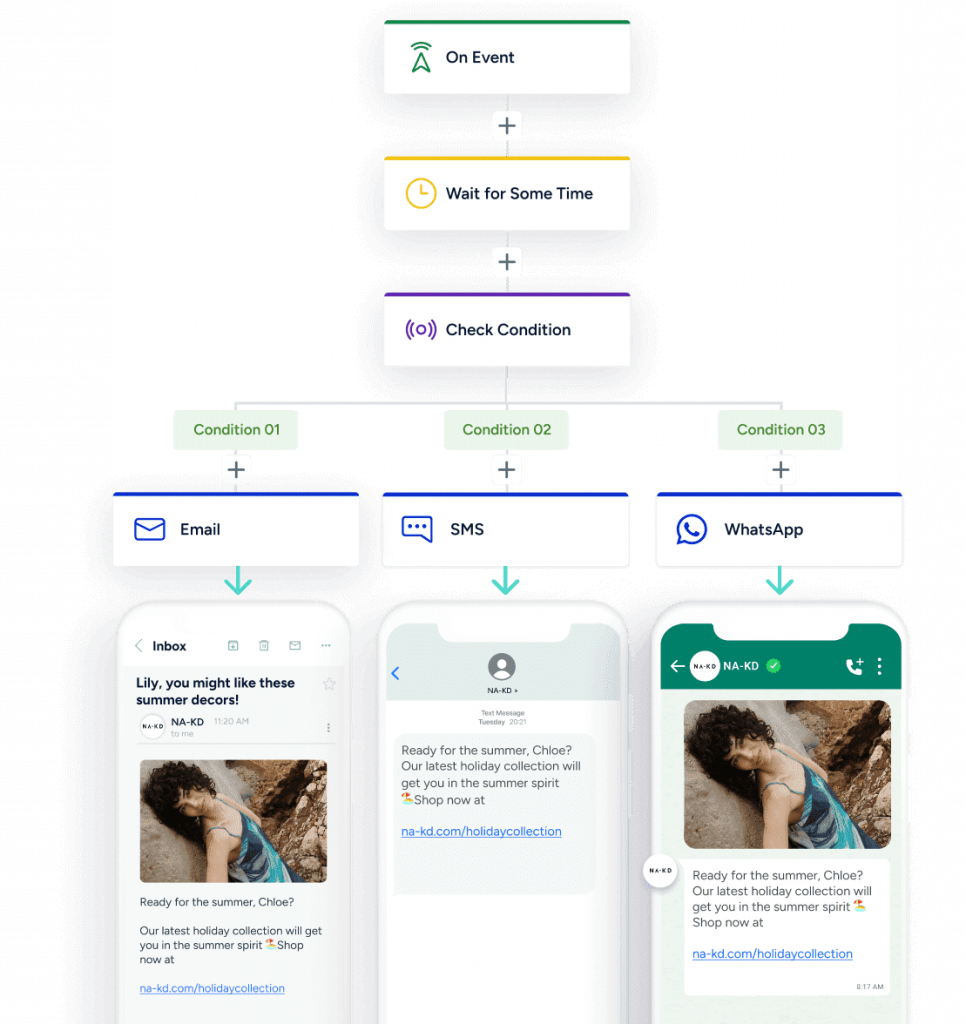
- Architect lets you select channels, wait times, conditions, and much more with a simple drag-and-drop editor. Plus, SiriusAI™ can build segments and journeys, as well as select the best customer communication channels, analyze A/B tests, and optimize send times so you can launch high-performing campaigns as fast as possible.
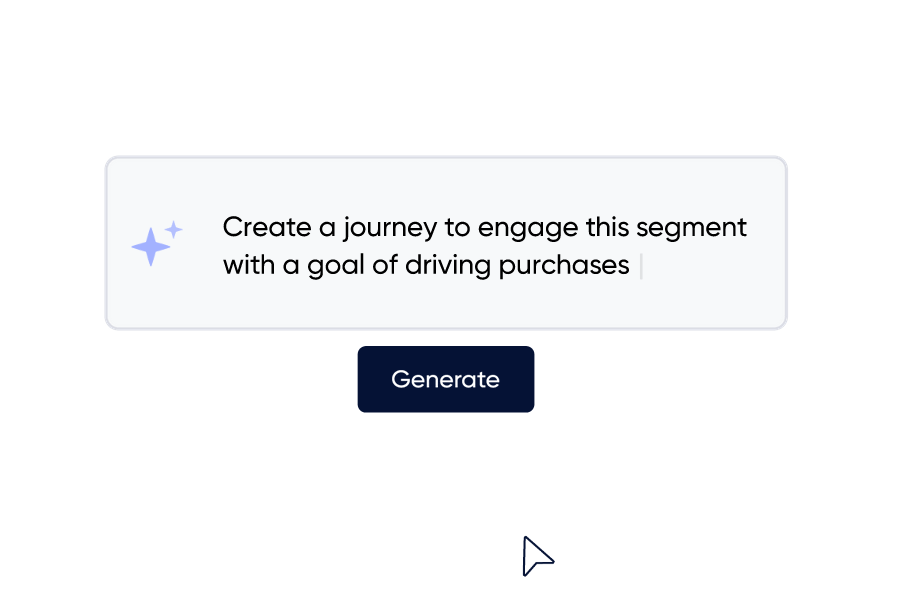
For more details on how Insider can help you engage customers across all channels, schedule a demo with our team.
2. Braze
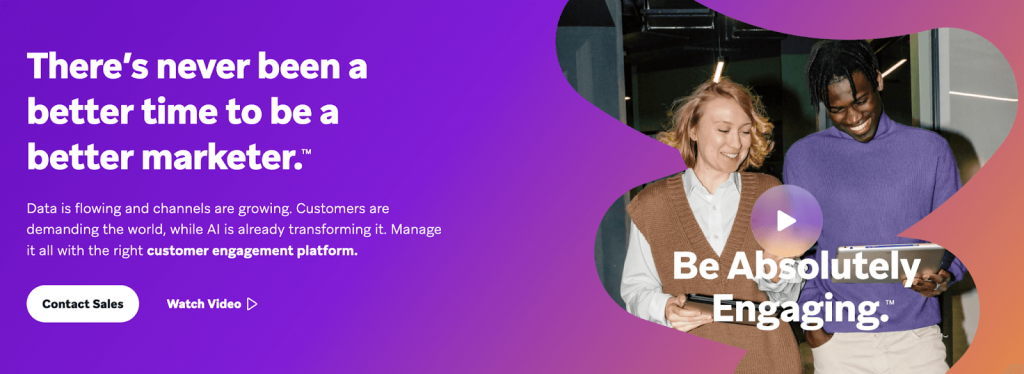
Braze is a customer engagement platform for email, SMS, WhatsApp, LINE, web and mobile app messaging, and media audience sync. It helps companies build, automate, and personalize campaigns across these channels. It also offers complementary features for landing page creation, feature flagging, and on-site engagement, although they’re more limited compared to other specialized solutions in these areas.
Learn more: 11 Braze alternatives for cross-channel marketing.
3. Twilio
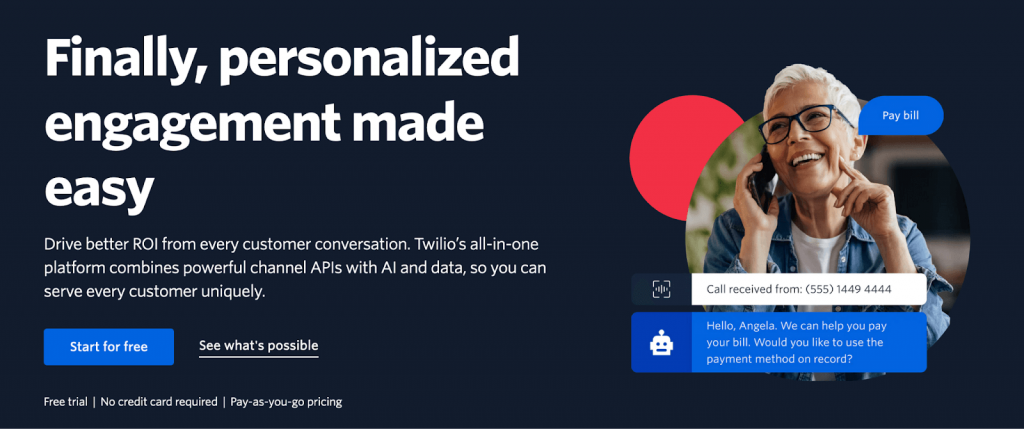
Twilio is a versatile communication platform famous for its channel APIs for messaging touchpoints (SMS, WhatsApp, RCS), voice, email, and other channels. Twilio also owns Segment (a popular CDP) and SendGrid (an email API and marketing campaign platform). The company offers a separate customer engagement solution called Twilio Engage that combines a native CDP and tools for activating data across channels.
4. HubSpot
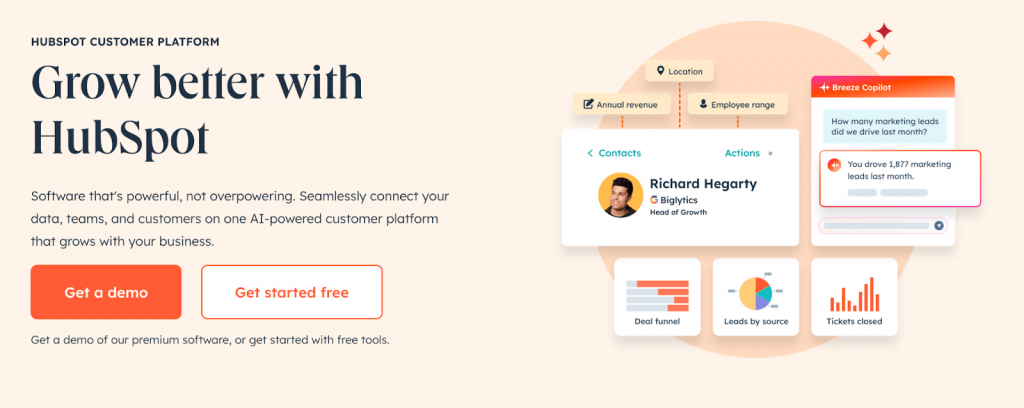
HubSpot is an AI-powered customer platform. It’s comprised of a few key products:
- The HubSpot CRM and sales software for better sales prospecting, sales automation, email and call tracking, and analytics.
- The Service Hub for AI-powered customer self-service, an omnichannel helpdesk, call tracking, knowledge base management, and more.
- The Marketing Hub for engaging customers across email, SMS, social media, and live chat with relevant messages and automating campaigns.
Outside of its customer engagement capabilities, HubSpot also offers tools for content marketing, operations, and billing automation.
5. Salesforce
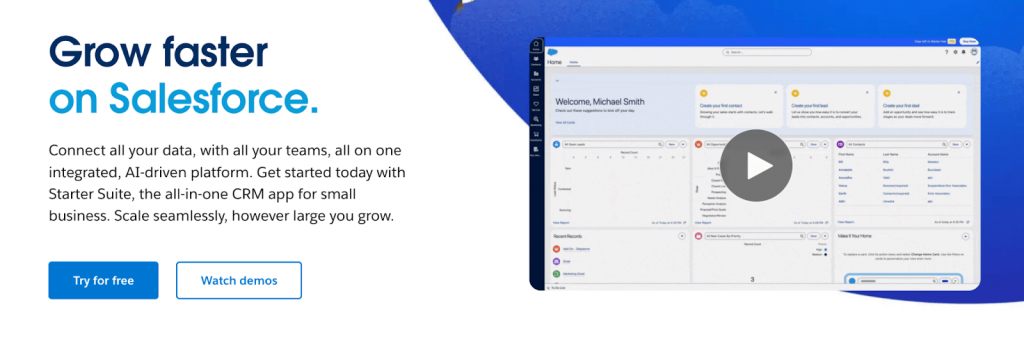
Salesforce is the most popular CRM and one of the most recognizable technologies in the world. As an enterprise company, Salesforce has many offerings for engaging customers in a variety of ways and across a multitude of channels. For example:
- Salesforce Marketing Cloud includes tools for email and mobile marketing that teams can use to reach customers with personalized content.
- Salesforce Service enables customer service agents to deliver quality support while automating repetitive queries with the help of AI.
- The Salesforce CRM makes it easy for marketing, sales, and customer service teams to access key data and use it to engage with customers in a relevant way.
Salesforce is likely the most versatile platform on this list, as it offers tools and features for all sorts of customer engagement use cases. However, it’s also known to be quite pricey and difficult to deploy and manage, especially for smaller teams.
6. Netcore Cloud
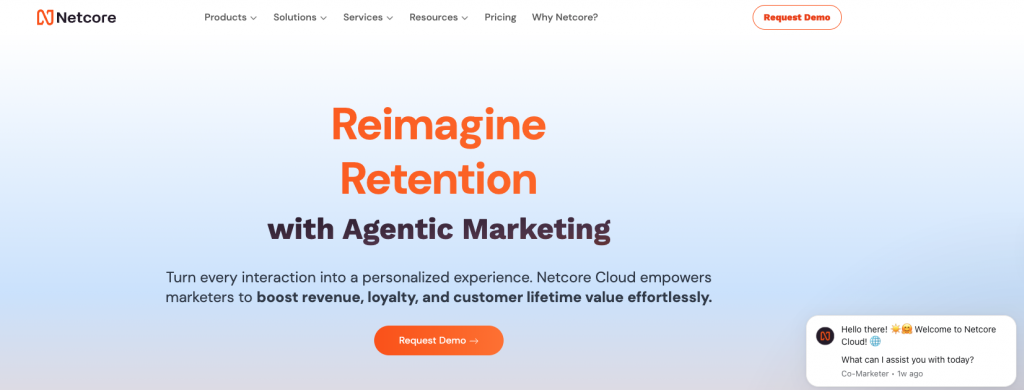
Netcore Cloud is a customer engagement platform. It helps businesses connect with customers through email, SMS, WhatsApp, push notifications, and in-app messages.
The platform is best known for:
- AI-powered insights that show customer behavior. It also predicts churn, and suggests better campaigns.
- Personalization & Recommendations for 1:1 product/content recommendations, predictive segments (propensity/churn/CLTV), and dynamic on-site/in-app experiences powered by Netcore’s AI.
- Analytics & Insights including funnels, cohorts, RFM, pathing, and revenue attribution to diagnose drop-offs and measure retention/LTV impact.
- Automate customer journey building with a drag-and-drop tool.
Netcore Cloud has a strong presence across Asia, the Middle East, and Africa. It offers scale, reliable support, and consistent customer engagement for brands.
II. Customer engagement platforms for customer service
These are more traditional customer engagement platforms in the sense they’re mainly used for answering customers’ questions and resolving their issues. They’re also referred to as ticketing systems or helpdesk software, depending on the context.
All three of these platforms offer:
- Live chat and messaging options for delivering fast customer service across your website or mobile app.
- Tools for consolidating multichannel conversions into a single inbox to simplify workflows for customer service agents.
- AI-powered assistants that can provide suggestions and insights to human agents or directly resolve repetitive queries.
- Features that enable customers to quickly rate conversations and provide in-depth feedback about their interactions with support teams.
This makes these engagement platforms a good option for customer service teams looking to provide fast responses and guide users toward the next steps in their journeys (e.g., purchases, demo requests, and so on).
7. Zendesk
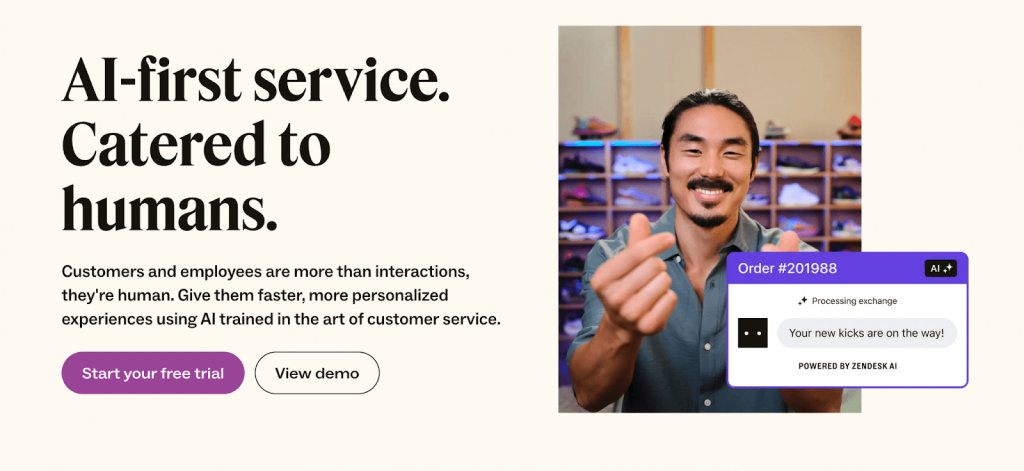
Zendesk is a complete customer service solution with features for messaging and live chat, automation, workforce engagement, and voice support. According to its website, Zendesk’s AI agents can resolve 50% of customer interactions and offer nonstop voice support. The platform also offers cross-channel reporting comparing performance to messaging, email, chat, and more, as well as monitoring calls to ensure quality conversations.
8. Intercom
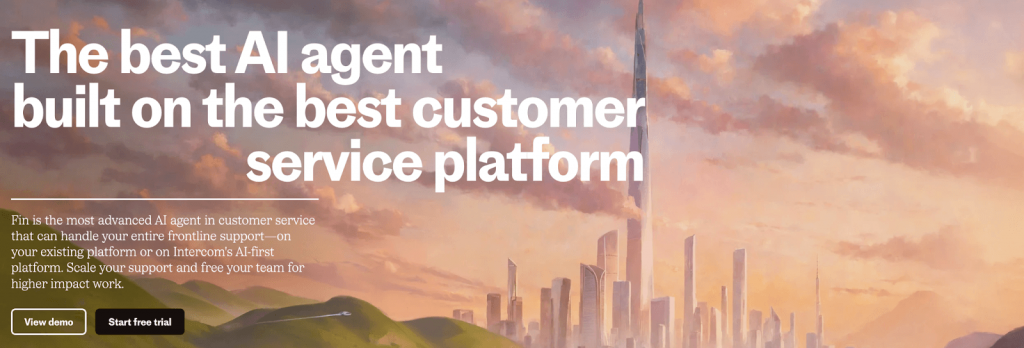
Intercom is an AI-first customer service platform. Its key offering is called Fin — an AI-powered agent that can handle a company’s entire frontline support. There’s also AI Copilot for providing assistance to human agents and AI Analytics for delivering recommendations to support leaders. Intercom also connects messages from any channel into one inbox, while supporting 45+ languages out of the box.
9. Freshdesk

Freshdesk is a ticketing solution that helps customer support teams organize and automate conversions with the help of AI. The platform offers a few key AI-powered capabilities, including:
- Freddy AI Agent, which learns quickly from various sources (i.e., PDFs and other company documents) to deliver 24/7 customer support that fits any brand’s guidelines and tone of voice.
- Freddy AI Copilot, which helps customer support agents with real-time suggestions, recommended quick responses, support quality reviews, and more.
- Freddy AI Analytics, which provides analysis and metrics like first response times, CSAT, and more.
Besides these engagement features, Freshdesk also offers tools for building knowledge bases, offering support in multiple languages, and creating community forums.
III. Customer engagement platforms for social media interactions
The final three platforms can help you engage customers across social media with relevant comments and messages. They’re used by social media marketers to keep a pulse on important conversations across Facebook, Instagram, LinkedIn, TikTok, X (formerly Twitter), and other social media platforms.
Since they’re not comprehensive customer engagement tools, teams use them in combination with some of the platforms from the previous categories. This makes them complementary solutions for use cases related to managing customer conversions across social media.
10. Sprout Social
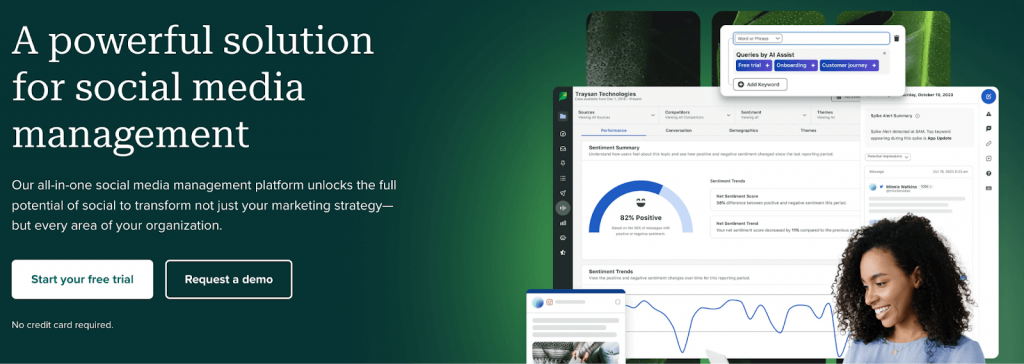
Sprout Social is an all-in-one social media platform. It offers many features spread across three categories — Engagement, Publishing, and Analytics. For user engagement, Sprout Social provides:
- AI-driven summaries and needs response detection.
- Crisis notification for messages that must be prioritized.
- Improve responses with AI-generated recommendations.
Sprout Social also comes with tools for influencer marketing, social listening, and employee advocacy.
11. Hootsuite
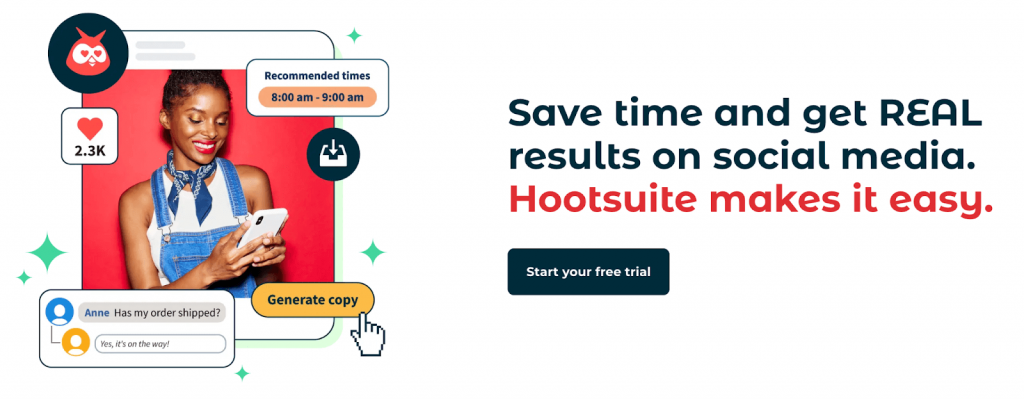
Hootsuite is a social media marketing and management tool. It offers various tools and features for content planning and publishing, social listening, social media analytics, and social advertising. Their engagement tools focus on helping brands chime into key conversations in real-time, find the best times to post, analyze engagement rates by post, network, or account, and drive revenue via social selling.
12. Buffer
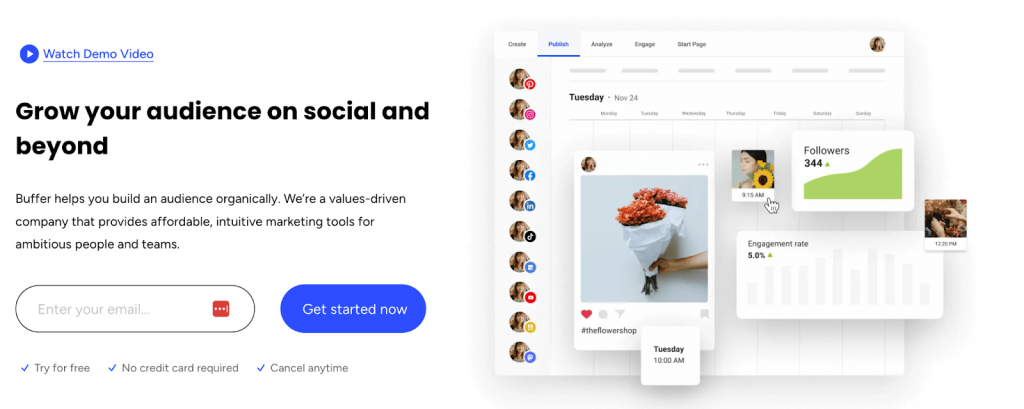
Buffer offers tools for teams looking to plan, publish, and analyze content and engage with users on the most popular social media platforms, including smaller ones like Pinterest, Mastodon, and Bluesky. In terms of user engagement, Buffer helps brands stay on top of important social media interactions, prioritize conversations, and answer questions as quickly as possible. Buffer also offers a mix of filtering and machine learning that identifies whether a comment is a negative comment, related to a purchase, or a question.
Engage your customers with personalized messages across all channels with Insider
Insider lets you reach customers across 12+ channels — including web, mobile apps, email, push notifications, SMS, WhatsApp, LINE, and Facebook Messenger — with personalized content, product recommendations, and conversions.
It also helps you set a solid foundation for all engagement efforts by unifying your customer data into a true enterprise CDP and creating 360-degree views of all customers. As a result, you can recognize a customer across any touchpoint and use their needs, interests, and preferences to deliver an exceptional experience.
This makes Insider ideal for midsized and enterprise brands looking to engage customers across different channels from one platform, personalize their experiences, and improve metrics like conversion rates, revenue, average order value (AOV), customer retention, and more.
Additionally, Insider offers:
- Best-in-class customer support teams that ensure you can quickly deploy our platform and launch effective customer engagement strategies.
- An omnichannel customer journey builder for creating automated marketing campaigns across all touchpoints using a simple drag-and-drop editor.
- A plethora of AI-powered tools and capabilities for working more efficiently, predicting customer behaviors, generating original content, and much more. For example, you can use our Conversational AI capabilities to have automated, two-way conversions that engage leads, drive conversions, and boost loyalty.
- Advanced website and mobile app personalization for tailoring all elements — including banners, categories, pop-ups, and product recommendations to visitors’ and customers’ preferences. This is essential for optimizing conversion rates and making the most out of your marketing spend.
- Proven templates for engaging customers across different channels and use cases.
For more details on how Insider can help you engage with your customers in the best possible way, book a free demo with our team.
Frequently Asked Questions (FAQs) about customer engagement platforms
What is customer engagement software?
Customer engagement software is a type of tool or platform built to facilitate customer conversations and other interactions across channels and customer lifecycle stages.
Some of these solutions support various channels like email, SMS, WhatsApp, and live chat, while others are solely focused on areas like social media.
The goal of using a customer engagement platform is to create long-term profitable relationships with customers delivering relevant and timely content or customer support at scale.
What platform is best for customer engagement?
The best platforms for customer engagement are:
- Insider.
- Braze.
- Twilio.
- HubSpot.
- Salesforce.
- Zoho.
For the needs of specific teams (e.g., customer service or social media marketing), other solutions like Zendesk, Intercom, Freshdesk, Sprout Social, Hootsuite, and Buffer are also among the best customer engagement platforms.
What is the difference between a CRM and a customer engagement platform?
CRMs and customer engagement platforms both facilitate relevant and timely customer conversations in different ways. CRMs organize data (mostly related to sales conversations and pipeline cottages) while engagement platforms provide the tools for having conversations with customers at scale across different touchpoints, like email, SMS, WhatsApp, and so on.
Since they complement each other, CRMs and engagement platforms are often used together. Some solutions combine both under one roof. For example, Salesforce and HubSpot are both famous for their CRMs but they also offer tools for customer service, and marketing teams to reach customers across different channels.Modern solutions like Insider also organize customer data and offer tools for engaging customers across channels. However, they don’t rely on a CRM as their data foundation. Instead, they use CDPs — more comprehensive platforms for unifying all types of customer data, rather than focusing only on website activities and sales-related interactions.



















